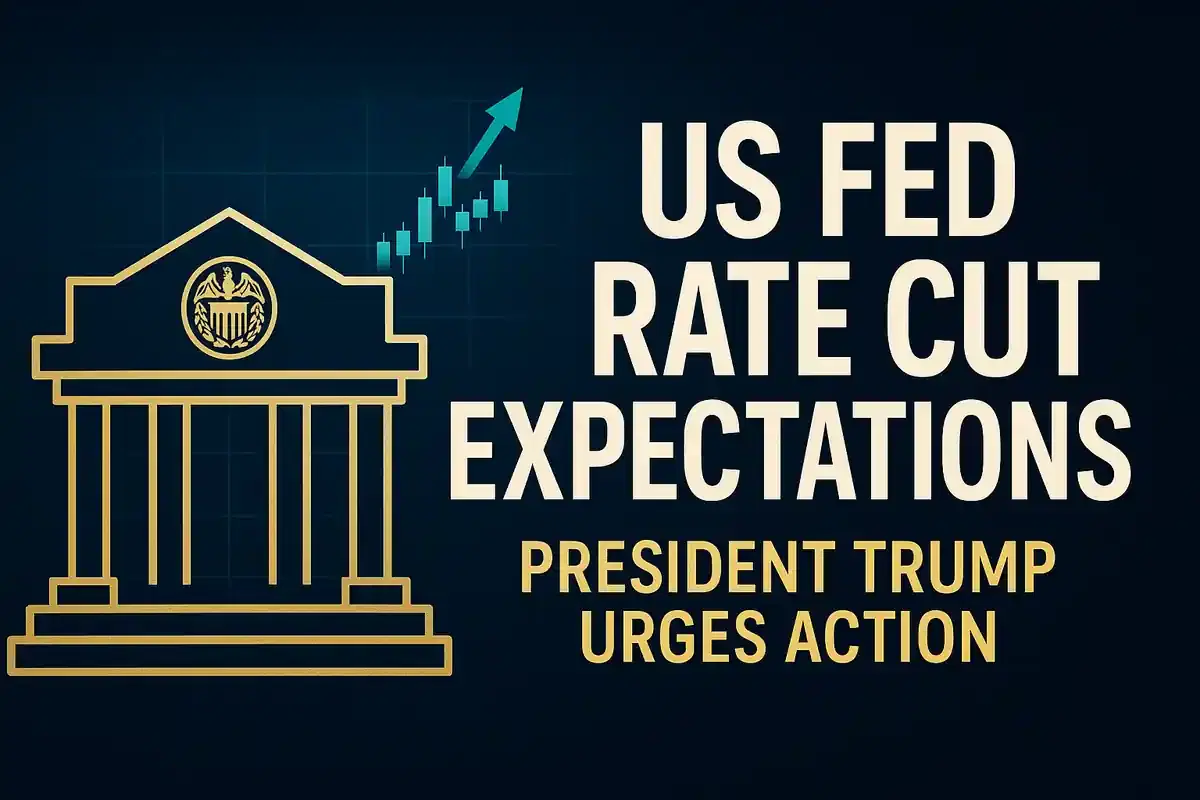Trump Pushes US Federal Reserve for Interest Rate Cut Amid Market Hopes and Economic Crosswinds
Economy
|
29th October 2025, 4:40 AM

▶
Short Description :
Detailed Coverage :
US President Donald Trump has voiced his desire for the US Federal Reserve to decrease interest rates, stating his hope that good news would lead to a stock market rise. This sentiment appears to be a push for the Fed to implement an expected rate cut. Markets have been optimistic, with the S&P500 index climbing over 5% in recent weeks, largely pricing in a 25 basis point cut by the Fed. This expectation is fueled by recent inflation data showing a softer-than-expected price increase. However, the US Federal Reserve is grappling with conflicting economic indicators. On one hand, signs of a weakening job market, exacerbated by layoffs, would typically prompt a rate cut to stimulate the economy. On the other hand, core inflation has remained steady at 3% for three consecutive months, significantly exceeding the Fed's 2% target. This high core inflation limits the central bank's room to maneuver on monetary policy. Compounding the issue, tariffs imposed by the Trump administration could lead to higher consumer prices, potentially complicating the Fed's efforts to manage inflation and economic growth. This scenario creates division among Fed policymakers regarding the best course of action.
Impact: This news has a moderate impact on global markets, including India, due to the interconnectedness of economies and the significant influence of US monetary policy decisions. A US rate cut can affect currency exchange rates, investment flows, and overall investor sentiment worldwide. Rating: 6/10
Definitions: Interest Rate Cut: A reduction in the benchmark interest rate set by a central bank, making borrowing cheaper and aiming to stimulate economic activity. Federal Reserve (The Fed): The central banking system of the United States, responsible for setting monetary policy. S&P500: A stock market index that tracks the performance of 500 of the largest publicly traded companies in the United States. Liquidity: The availability of cash or easily convertible assets in the financial system. Higher liquidity generally supports economic activity. Monetary Policy: Actions undertaken by a central bank to manipulate the money supply and credit conditions to stimulate or restrain economic activity. Tariffs: Taxes imposed by a government on imported goods, often used to protect domestic industries or generate revenue, but can lead to higher consumer prices. Core Inflation: A measure of inflation that excludes volatile components such as food and energy prices, providing a more stable view of price trends. Basis Point: A unit of measure equal to one-hundredth of one percent (0.01%). A 25 basis point cut means the interest rate is lowered by 0.25%.